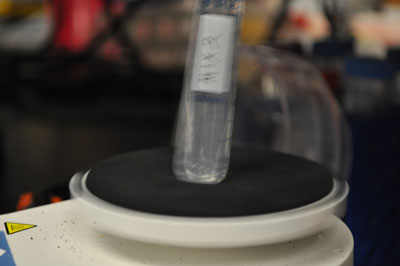 What if you could fashion a molecular system that could fight iron deficiency in developing nations? A system that could be grown and distributed in something as simple as yogurt.
What if you could fashion a molecular system that could fight iron deficiency in developing nations? A system that could be grown and distributed in something as simple as yogurt.
Dec 14th, 2012
Read more
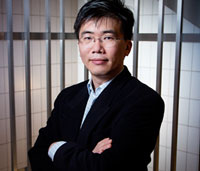 Scientists have long sought to understand how a DNA repair protein, known as RecA in bacterial cells, helps broken DNA find a way to bridge the gap. In a new study, researchers report they have identified how the RecA protein does its job.
Scientists have long sought to understand how a DNA repair protein, known as RecA in bacterial cells, helps broken DNA find a way to bridge the gap. In a new study, researchers report they have identified how the RecA protein does its job.
Dec 13th, 2012
Read more
This study sheds new light on how cells manage to keep traffic flowing smoothly along this busy transportation network that is vital to the survival of cells and whose failure can lead to a variety of diseases, including Alzheimer's and cancer.
Dec 13th, 2012
Read more
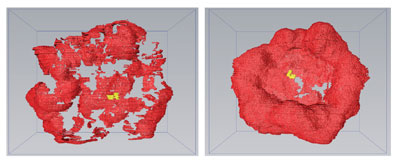 An international collaboration between researchers at the Babraham Institute, Cancer Research UK's London Research Institute, Imperial College London and Amherst College in the US, has revealed an instrumental molecule in ensuring that the nuclear membrane reforms correctly after cell division, and therefore plays a key role maintaining the delicate balance between cell growth and cell death.
An international collaboration between researchers at the Babraham Institute, Cancer Research UK's London Research Institute, Imperial College London and Amherst College in the US, has revealed an instrumental molecule in ensuring that the nuclear membrane reforms correctly after cell division, and therefore plays a key role maintaining the delicate balance between cell growth and cell death.
Dec 13th, 2012
Read more
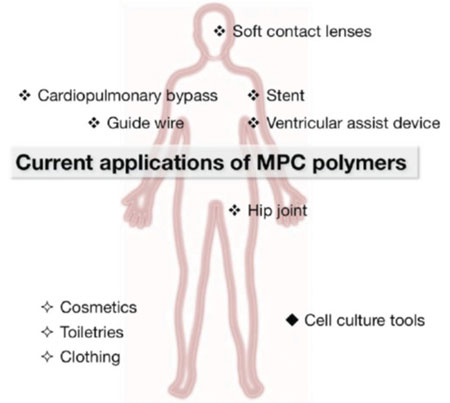 A review describes how developments in synthesis techniques have liberated the polymer MPC's potential for a huge range of medical and biological applications.
A review describes how developments in synthesis techniques have liberated the polymer MPC's potential for a huge range of medical and biological applications.
Dec 13th, 2012
Read more
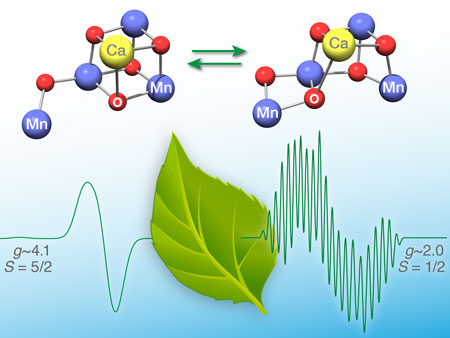 Scientists at the Max Planck Institute for Chemical Energy Conversion have solved a long-standing puzzle in photosynthesis research. With the aid of quantum chemistry they were able to provide unexpected insight into the properties of the oxygen evolving complex (OEC).
Scientists at the Max Planck Institute for Chemical Energy Conversion have solved a long-standing puzzle in photosynthesis research. With the aid of quantum chemistry they were able to provide unexpected insight into the properties of the oxygen evolving complex (OEC).
Dec 12th, 2012
Read more
The European Commission will be building a new team with 15 experts, to examine the development and implications of patent law in the field of biotechnology and genetic engineering.
Dec 12th, 2012
Read more
 In a new approach for tapping biomass as a sustainable raw material, scientists are reporting use of a Nobel-Prize-winning technology to transform plant "essential oils" into high-value ingredients for sunscreens, perfumes and other personal care products.
In a new approach for tapping biomass as a sustainable raw material, scientists are reporting use of a Nobel-Prize-winning technology to transform plant "essential oils" into high-value ingredients for sunscreens, perfumes and other personal care products.
Dec 12th, 2012
Read more
A University of British Columbia researcher has helped create a gel - based on the mussel's knack for clinging to rocks, piers and boat hulls - that can be painted onto the walls of blood vessels and stay put, forming a protective barrier with potentially life-saving implications.
Dec 11th, 2012
Read more
For the first time, researchers sequenced DNA molecules without the need for the standard pre-sequencing workflow known as library preparation.
Dec 11th, 2012
Read more
Physicists and biologists apply Big Data statistical tools to study marine plant evolution.
Dec 10th, 2012
Read more
In Shoreditch, residence to London artists, coffee shops and retro clothes, a group of amateur scientists and UCL students have met to engineer biology. They're building a bacteria incubator out of a fridge box, cardboard and open source electronics. Their mission? To test the potential and limitation of biohacking - citizen science in synthetic biology.
Dec 8th, 2012
Read more
A newly discovered bacterium degrades an antibiotic both to protect itself and get nutrition.
Dec 7th, 2012
Read more
Researchers in the United Kingdom have discovered that copper has the ability to prevent the horizontal transmission of genes, which has fuelled the spread of global antibiotic-resistant infections.
Dec 6th, 2012
Read more
Press coverage of synthetic biology in the United States and Europe increased significantly between 2008 and 2011, according to a report released today by the Synthetic Biology Project at the Woodrow Wilson International Center for Scholars.
Dec 5th, 2012
Read more
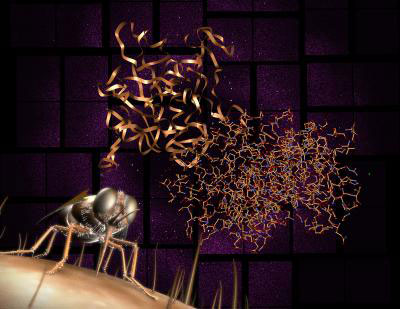 An international team of scientists, using the world's most powerful X-ray laser, has revealed the three dimensional structure of a key enzyme that enables the single-celled parasite that causes African trypanosomiasis (or sleeping sickness) in humans.
An international team of scientists, using the world's most powerful X-ray laser, has revealed the three dimensional structure of a key enzyme that enables the single-celled parasite that causes African trypanosomiasis (or sleeping sickness) in humans.
Dec 5th, 2012
Read more
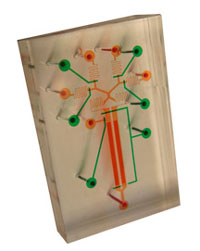 Johns Hopkins researchers have used a small synthetic molecule to stimulate cells to move and change shape, bypassing the cells' usual way of sensing and responding to their environment. The experiment pioneers a new tool for studying cell movement, a phenomenon involved in everything from development to immunity to the spread of cancer.
Johns Hopkins researchers have used a small synthetic molecule to stimulate cells to move and change shape, bypassing the cells' usual way of sensing and responding to their environment. The experiment pioneers a new tool for studying cell movement, a phenomenon involved in everything from development to immunity to the spread of cancer.
Dec 5th, 2012
Read more
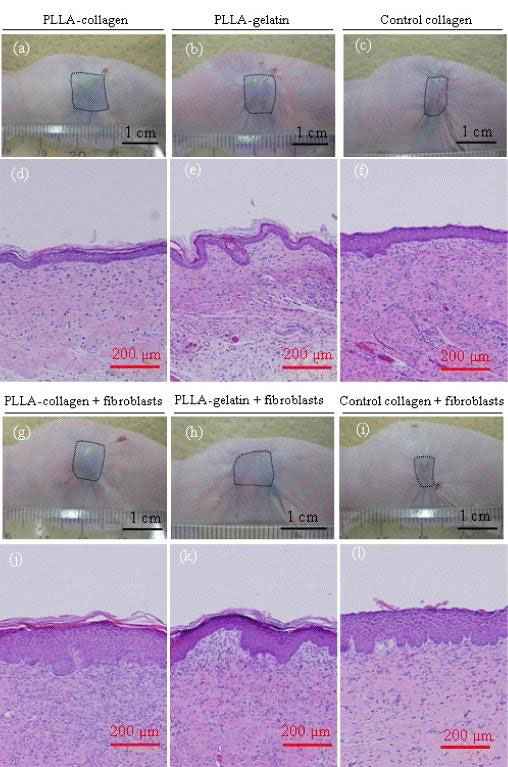 Researchers in Japan have created a hybrid scaffold which promotes tissue regeneration, strong and biodegradable.
Researchers in Japan have created a hybrid scaffold which promotes tissue regeneration, strong and biodegradable.
Dec 5th, 2012
Read more
 What if you could fashion a molecular system that could fight iron deficiency in developing nations? A system that could be grown and distributed in something as simple as yogurt.
What if you could fashion a molecular system that could fight iron deficiency in developing nations? A system that could be grown and distributed in something as simple as yogurt. 
 Subscribe to our Biotechnology News feed
Subscribe to our Biotechnology News feed






